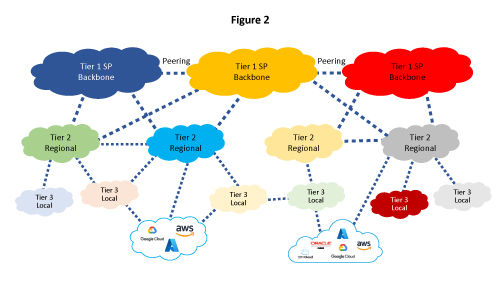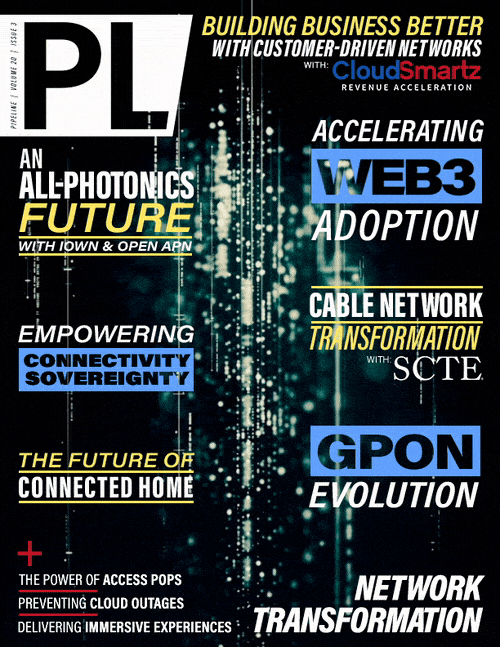Cloud Outages and the Flattening of the Internet
What is behind their distrust? We’ve recently seen significant outages in major cloud providers due to configuration and policy errors from Tier 1, 2, and 3 service providers. Network reachability failure occurs due to a few reasons.
- Router configuration errors. Someone in one of the tiers misconfigures their router, and traffic gets misrouted as a result.
- Link problems.
- Delays in network convergence. This is where the routing rules to get to a specific provider change in one of the tiers, and it takes a while for the change to propagate to the other tiers. During this delay, traffic to the providers fails to reach the provider.

Figure 2: Tier 1 is being replaced by the cloud provider backbone.
click to enlarge
Larger providers understand these problems very well, especially with small carriers. Local issues sometimes cause global outages. For example, if your local ISP (Tier 3) has one of the aforementioned routing problems, your connection to the large provider (e.g., Facebook or AWS) will fail. Essentially, the ISP promises a destination or service that it can’t deliver. They don’t have end-to-end control or visibility. They have to trust that routing rules propagated from higher tiers are accurate, but as we’ve seen, that is not always true.
Fixing the Internet
We can’t afford the current model’s internet-based connectivity for mission-critical services. On the other hand, if we change a few things, which in my opinion and experience is critical for next-generation business class internet, we can establish direct control plane peering between the end customer and the cloud provider.
We start by introducing a Network-as-a-Service provider. This NaaS provider sits between the enterprise and the provider (Facebook, AWS, etc.). The NaaS provider has no transit information about customers and cloud provider routes. This means




















